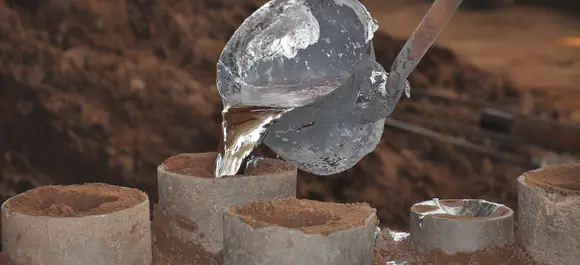Mobile:+86-311-808-126-83
Email:info@ydcastings.com
French
metal casting sand
Understanding Metal Casting Sand Types, Properties, and Uses
Metal casting is a vital process in various industries, allowing manufacturers to create intricate components with precise dimensions. Among the key materials involved in metal casting, sand plays a crucial role. This article delves into the different types of casting sands, their properties, and their applications in the metal casting process.
What is Metal Casting Sand?
Metal casting sand is a type of sand specifically used in the metal casting process to create molds. The primary purpose of the sand is to hold its shape when packed around a pattern, allowing molten metal to be poured in and take the shape of the mold. The sand also needs to withstand high temperatures during the casting process.
Types of Casting Sand
There are several types of sand used in metal casting, each with its own unique properties
1. Green Sand This is a mixture of sand, clay, and water, making it the most commonly used sand in metal casting. It is called green because it is used in a damp state. Green sand provides good moldability, strength, and thermal conductivity, making it suitable for casting ferrous and non-ferrous metals. Its ability to be reused multiple times without significant degradation makes it a cost-effective choice.
2. Dry Sand Made from silica sand mixed with a bonding agent, dry sand is air-dried before use. It offers excellent dimensional accuracy and surface finish, making it ideal for high-precision casting. However, it does not have the same moisture content as green sand, which can affect its ability to cope with the thermal expansion of molten metal.
3. Sodium Silicate Sand This type of sand uses sodium silicate as a binder. When heated, the binder hardens, providing a strong mold. Sodium silicate sand is often used for its ability to produce complex shapes with smooth surfaces. It is particularly effective in high-production environments, offering improved performance over traditional sands.
4. Resin Sand This is a mixture of sand and a thermosetting resin binder. When heated, the resin binds the sand particles together. Resin sand molds are known for their excellent surface finish and dimensional accuracy, making them suitable for intricate designs. However, the production of resin sand molds can be more expensive due to the cost of the resins used.
metal casting sand

5. Vacuum Molding Sand This technique uses a vacuum to create a mold from a mixture of sand and thermosetting resin. The vacuum helps in producing highly accurate and complex geometries with minimal draft angles. It is widely used in applications where precision and surface finish are paramount.
Key Properties of Casting Sand
The effectiveness of casting sand in metal casting can be attributed to certain essential properties
- Refractoriness Casting sand must withstand the high temperatures of molten metal without breaking down or deforming. - Binding Strength The sand should have sufficient strength to hold its shape during the pouring of the molten metal and throughout the cooling process. - Permeability This property allows gases generated during the casting process to escape, preventing defects in the final product. - Cohesiveness Good cohesiveness ensures that the sand particles adhere together without excessive bonding, allowing easy mold removal and pattern extraction.
Applications of Metal Casting Sand
Metal casting sand is primarily used in applications across various industries
- Automotive Manufacturing Many components, such as engine blocks and transmission cases, are produced using sand casting. - Aerospace Industry Precision components used in aircraft engines and structures are often manufactured through sand casting techniques. - Art and Sculptures Artists often utilize sand casting to create intricate metal sculptures due to the versatility and adaptability of sand molds.
Conclusion
Metal casting sand is a fundamental component in the production of metal parts, influencing the quality, precision, and efficiency of the casting process. Understanding the different types of casting sands and their characteristics can help manufacturers choose the right material for their specific applications, ultimately leading to better quality products and reduced production costs. As technology advances, the evolution of sand casting techniques and materials will continue to enhance the capabilities of the metal casting industry.











